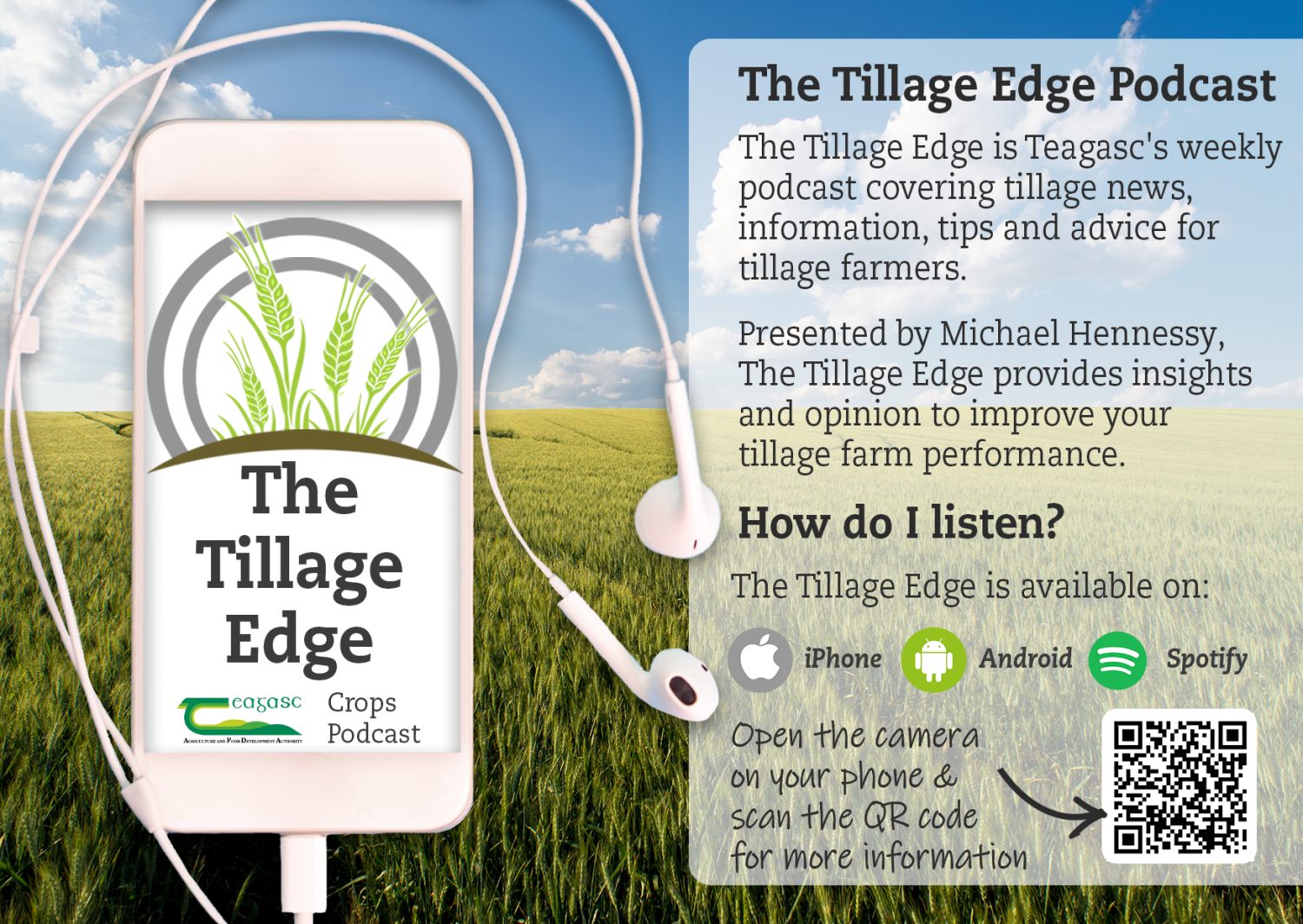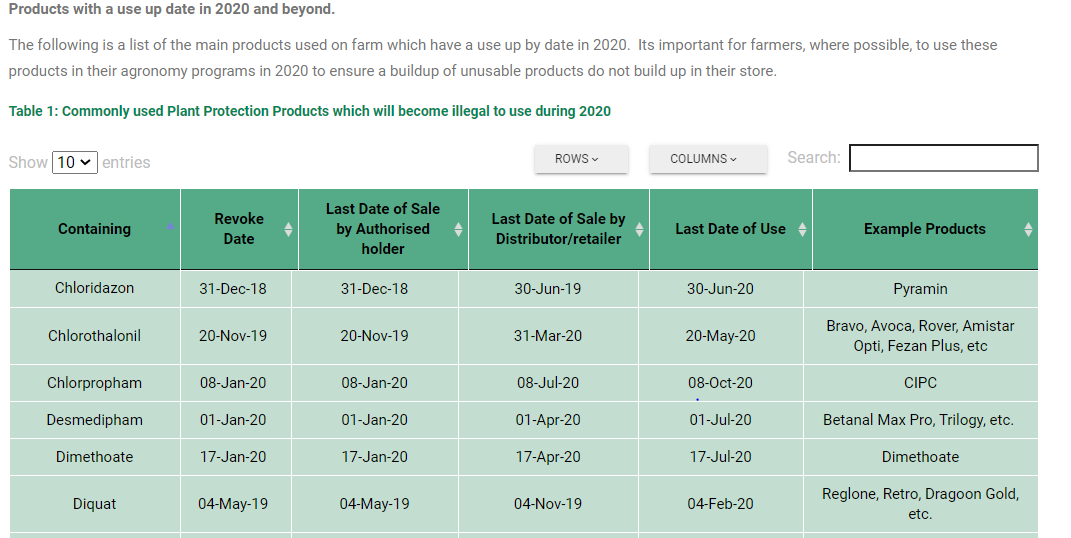
Teagasc Crop Report
Update Number 14
Update Number 14
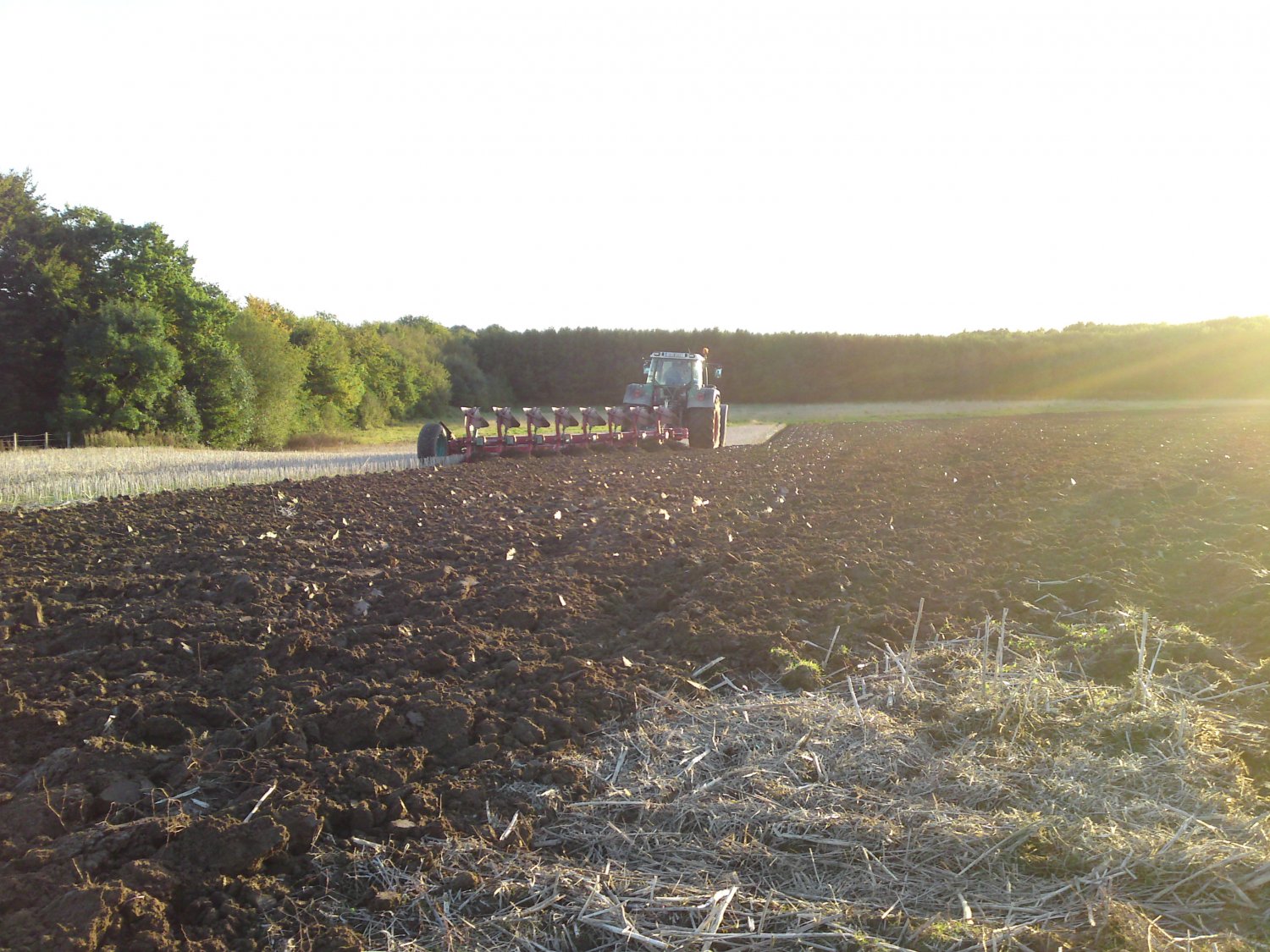
To view the full report you must have an existing account with Teagasc ConnectEd.
Farmers sign in hereAlready have a ConnectEd account? Connected Client or Teagasc staff log in here
Winter cereal sowing rates
Reasonable progress has been made with autumn cereal planting but wet conditions has caused delays in some parts of the country. As we move into the second half of October seed rates need to be increased to compensate for later sowing and lower establishment rates.
Please create an account to view hidden content
BYDV
BYDV can cause significant yield loss to winter cereals with up to 3.7t/ha yield losses recorded in Teagasc winter barley experiments. Insecticide use should be targeted and only used after all IPM measures have been employed to prevent further resistance development.
Please create an account to view hidden content
Cereal weed control
Weed control in autumn planted cereals requires a planned approach. Herbicide choice needs to target the the most competitive weeds with particular focus on the germination pattern of the weeds. Competitive autumn germinating weeds like bromes and annual meadow grass need to be targeted early for best control to avoid yield loss. Later germinating weeds can be controlled later in the season without yield loss.
Please create an account to view hidden content
Winter Oilseed Rape
Crops in general are growing well with many crops at the 4 true leaf stage. Volunteer cereals are visible in many crops and while some have been treated later sown crops have not yet received a herbicide. There have been no reports of disease in crops as of yet but phoma is likely to appear over the coming weeks.
Please create an account to view hidden content
Potatoes
Lifting is well underway in all parts of the country. Progress was halted last week due to the heavy rain in early October but many growers are making good progress this week with some expecting to be finished harvesting in the next week or so. Slow skin set has delayed some growers with many commenting that the PPI inhibitors were slow to desiccate crops.
Please create an account to view hidden content
Soil Management
Over the last month there has been significant rainfall with up to 50 to 70 mm in places and soil trafficability is quite poor in places. Rainfall for the coming week is predicted as low and soil conditions should improve over the coming days.
Please create an account to view hidden content
Key Scheme Dates
The next couple of months will see a number of important dates for schemes and regulations. For the terms and conditions for the individual schemes please check out the Department of Agriculture website.
Please create an account to view hidden content
Tillage Edge Podcast
Every week Teagasc produce a podcast for tillage farmers. The podcasts cover the latest information, insights and opinion to improve your tillage farm performance.
The podcast is available on the Teagasc website or on Spotify or in Apple podcast.
Teagasc ECT Grass Weed Survey
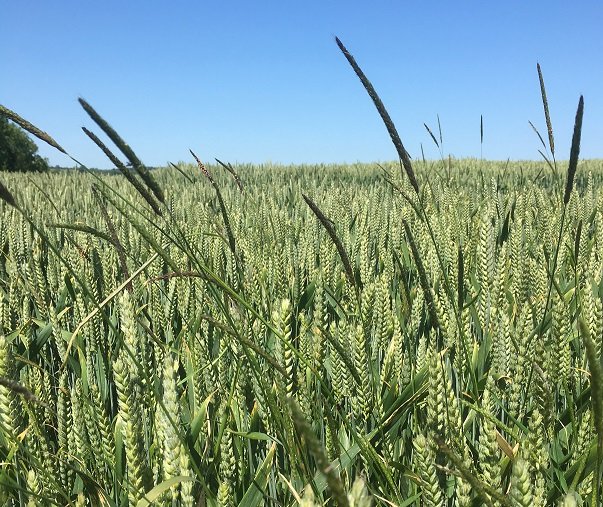
The Teagasc ECT project is carrying out an online survey to get a farmer insight on grass weed resistance management strategies. The survey will help to develop control strategies and the best supporting advisory messages for the future. It takes about 10 minutes to complete.
Simply scan the QR code below with your phones camera (You may have to install a QR code scanner app onto some phones, although IPhones usually have this functionality installed in the camera) to complete the survey or follow the link Grass Weed Survey

Plant Protection Product changes 2020 (Updated)
There are significant changes in the products which can be used this year. Below is a selection of the main products used on farm which have a use up date in 2020
Managing hedges
Hedges delineate the landscape - part of local history and folklore. They evoke a sense of place on a farm and in a locality. Like a calendar, hedges count down the seasons of the year, with bud burst heralding the breaking of dormancy, through the season with the filling of berries and the shedding of leaves. Hedges are an example of an ecosystem with native Irish flora and fauna co-existing as they have done over the centuries. Management of hedge rows is particularly important for tillage farmers as surveys have shown the quality of tillage hedges is generally poor and in dire need of improved management.
For more information on the flora and fauna which the hedge rows support click here
Hedge cutting – for hedges fit for birds and bees
Birds do not nest near the ground, as foxes will get them, or near the top of a hedge as they are vulnerable to birds of prey. The fact that there are no birds nests i
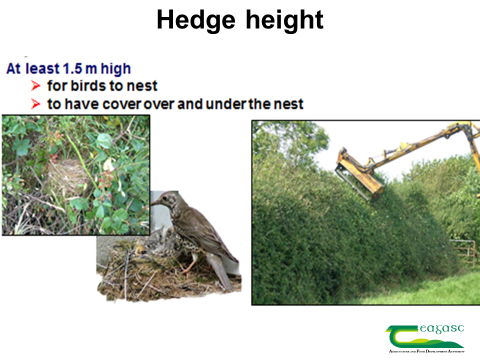
n hedges cut to a ‘short back and sides’ has been is an argument for allowing such hedges to be cut in the bird nesting season!.
Teagasc have a publication called Routine Mechanical Hedge Cutting which outlines the best practice of hedge cutting. Some of the key points are outlined below.
- Hedges must be over 1.5 m to be used for bird nesting.
- Farms cannot be good for biodiversity if birds do not nest in our hedges or good for bees if there are no flowers in our hedges. Bees need flowers. These are present in escaped hedges where thorn trees have grown up into single mature trees with a full canopy or where occasional thorn saplings are retained in hedges that are topped.
The management guidelines for hedge cutting of routinely trimmed topped hedges are:
- Side trim from a wide base to a triangular profile
- Leave the peak as high as possible while still cutting the growing point
- Retain occasional thorn saplings to allow them to grow into individual mature trees.
Relict hedge or treeline or strip if woodland: Leave alone or fence off or side trim if necessary
Escaped hedge
- Side trim,
- Do NOT top,
- Can rejuvenate by laying or coppicing at ground level
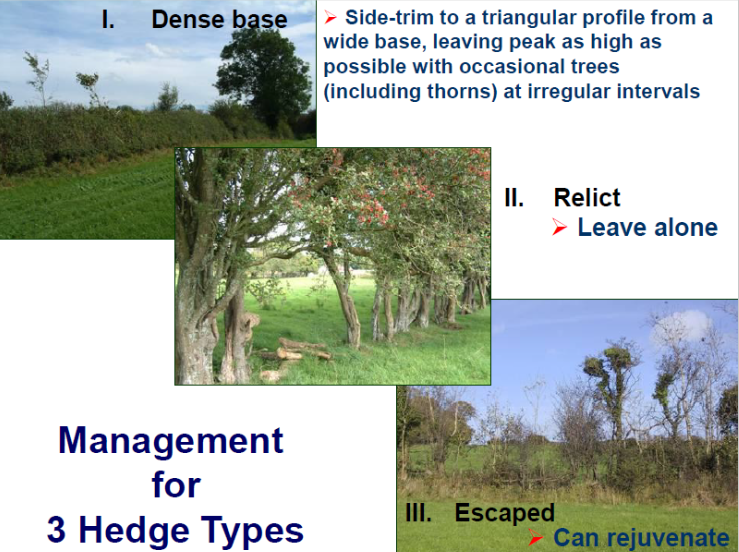
Information on
